The Course
Timeless design for the modern golfer.
Cutalong Golf Course is a private, championship-caliber course designed by renowned architect Tom Clark. Set above Lake Anna, it blends natural beauty with strategic design inspired by iconic holes from around the world. Thoughtfully crafted for today’s golfer, the course delivers an experience that’s both classic in feel and modern in execution.
Crafted To Inspire Every Golfer
The course features six tee box options to accommodate a wide range of abilities, offering a versatile playing experience. Total yardages range from 4,311 yards from the Green tees to 7,368 yards from the Black tees.
Course Details
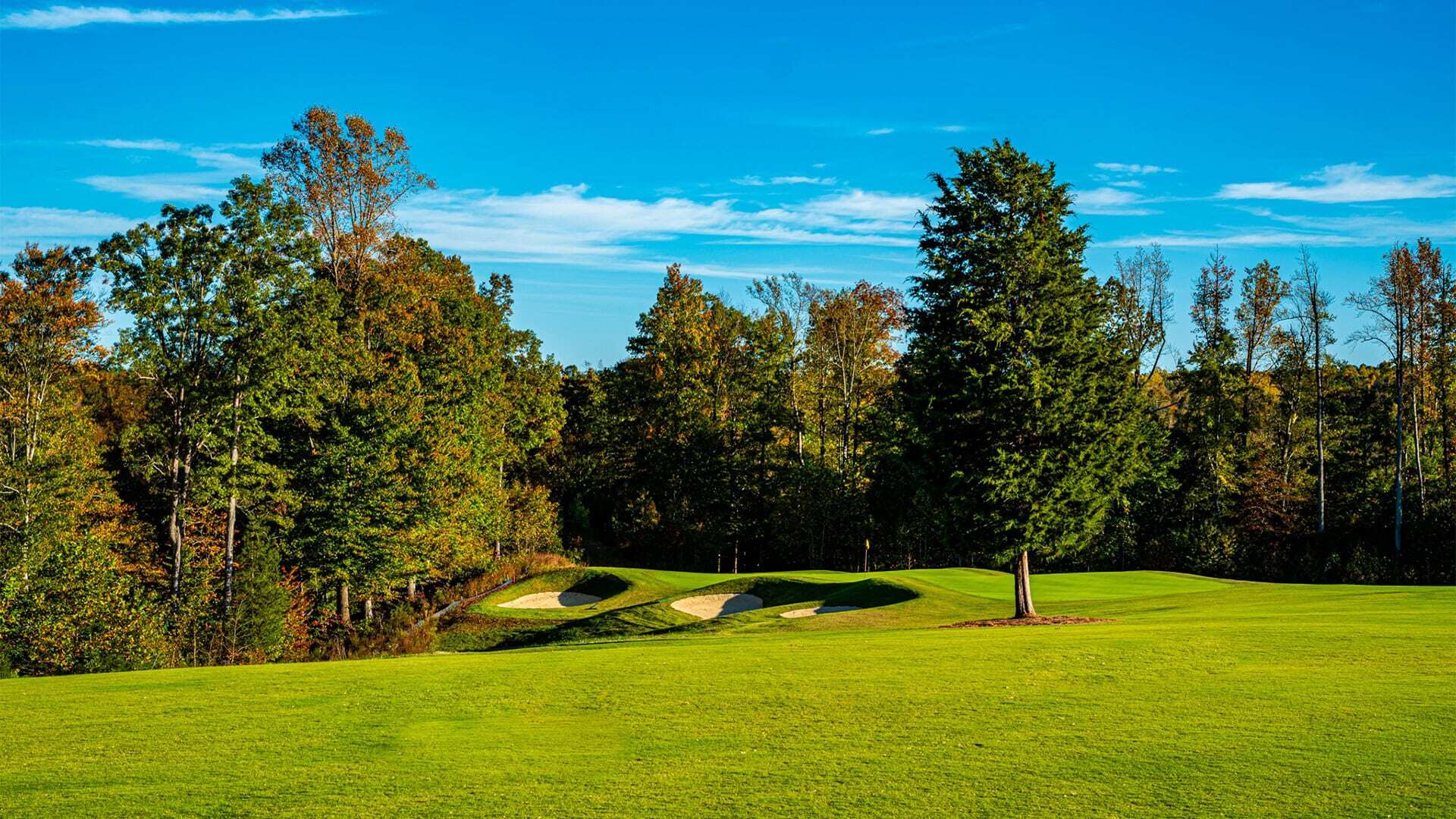
Hole No. 1
The opening hole showcases the course’s natural flow, with a wide domed fairway and a lone cedar forcing strategic tee shot placement. Thanks to the imagination of master shaper, Brian “Gonzo” Jennings, the green drops dramatically from front to back in three bold terraces. A smart drive up the left sets up the best angle into a long, terraced green inspired by Robert Trent Jones’s Spyglass Hill at Pebble Beach. It’s a forgiving start off the tee—but your first approach shot of the day needs precision.
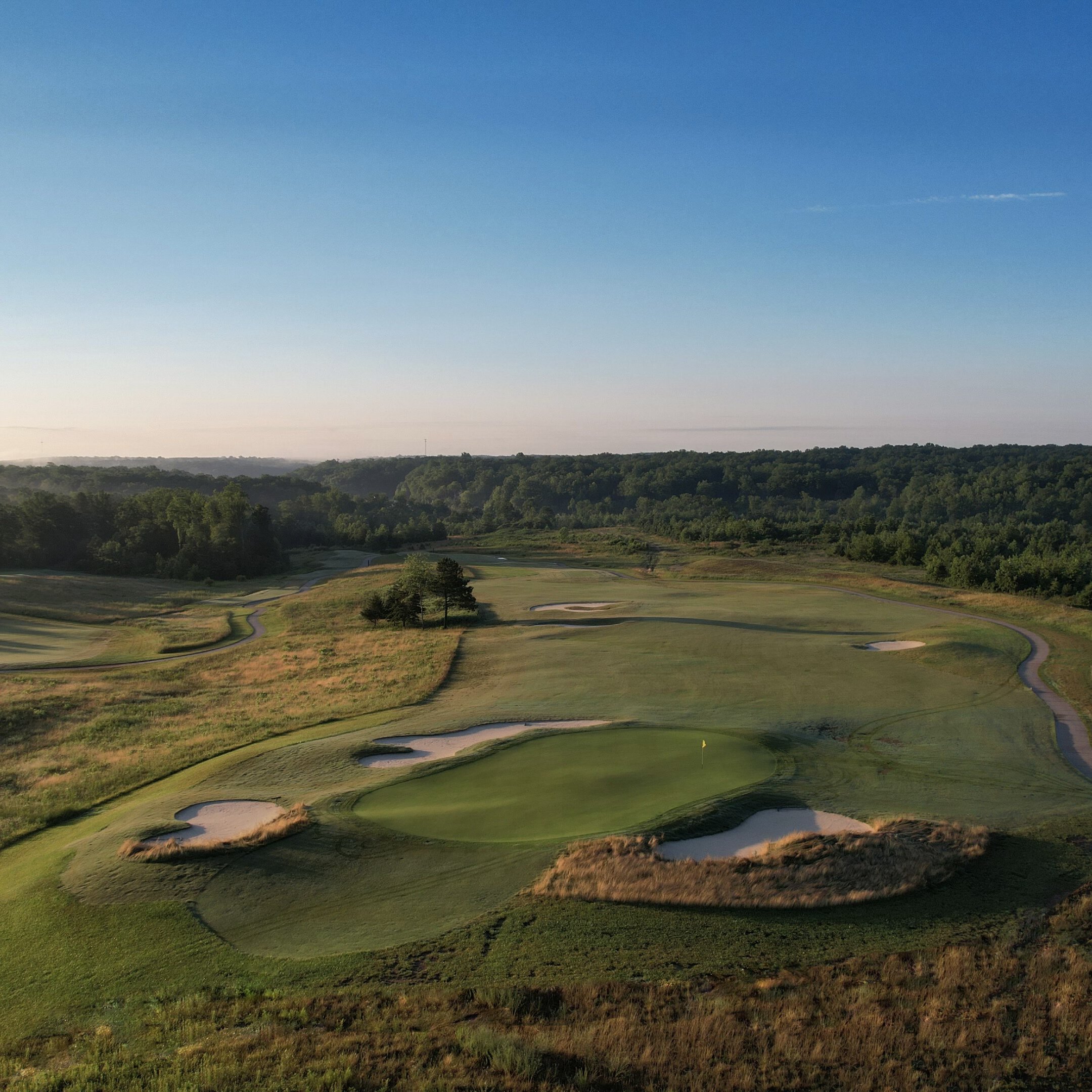
Hole No. 2
Tom Clark’s fascination with Great Britain’s course designs is the basis for the second, another hole that uses the natural existing topography. Inspired by Tom Simpson’s classic “drive-and-pitch” design, this hole is a dogleg right that rewards strategy over aggression. With a steep drop-off and well-guarded green, the smart play is up the left for the best approach.

Hole No. 3
The first par 5 plays downhill, around a corner and through a tree-lined corridor with a hidden landing area and target bunkers off the tee. A sunken railroad cut crosses the fairway 100 yards from a plateau green, inspired by James Braid at the King’s Course at Gleneagles in Scotland, a green called “Het Girdle,” which is Gaelic for “hot griddle.” Miss the green, and you’ll feel the heat.
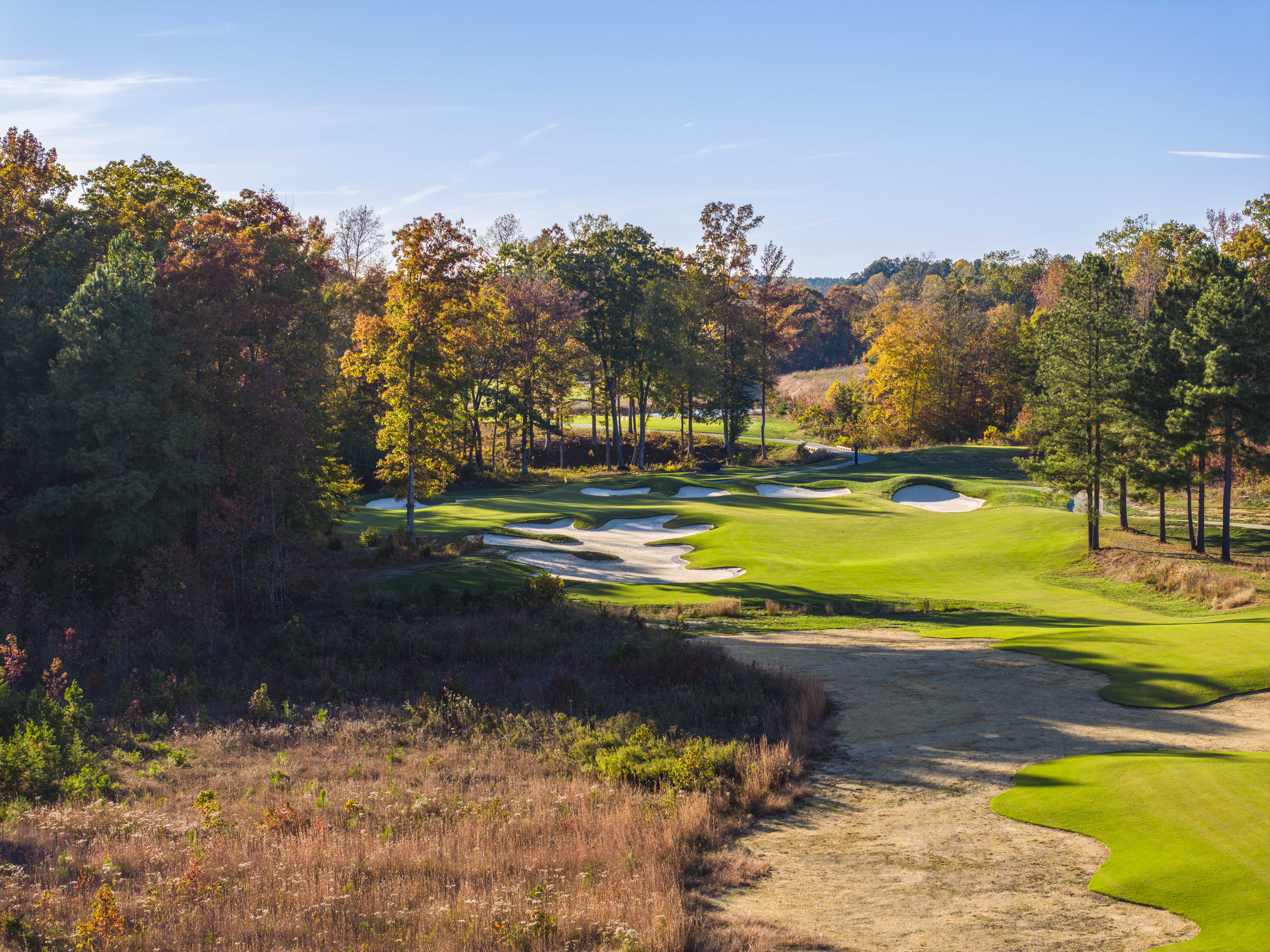
Hole No. 4
The par-3 fourth skirts the lowlands along Contrary Creek, which flows into Lake Anna a short distance away. The green is patterned after the famous 17th hole at Pebble Beach, an hourglass tilted on its side, with the back-left lobe lower than the front right and separated by a slight ridge.
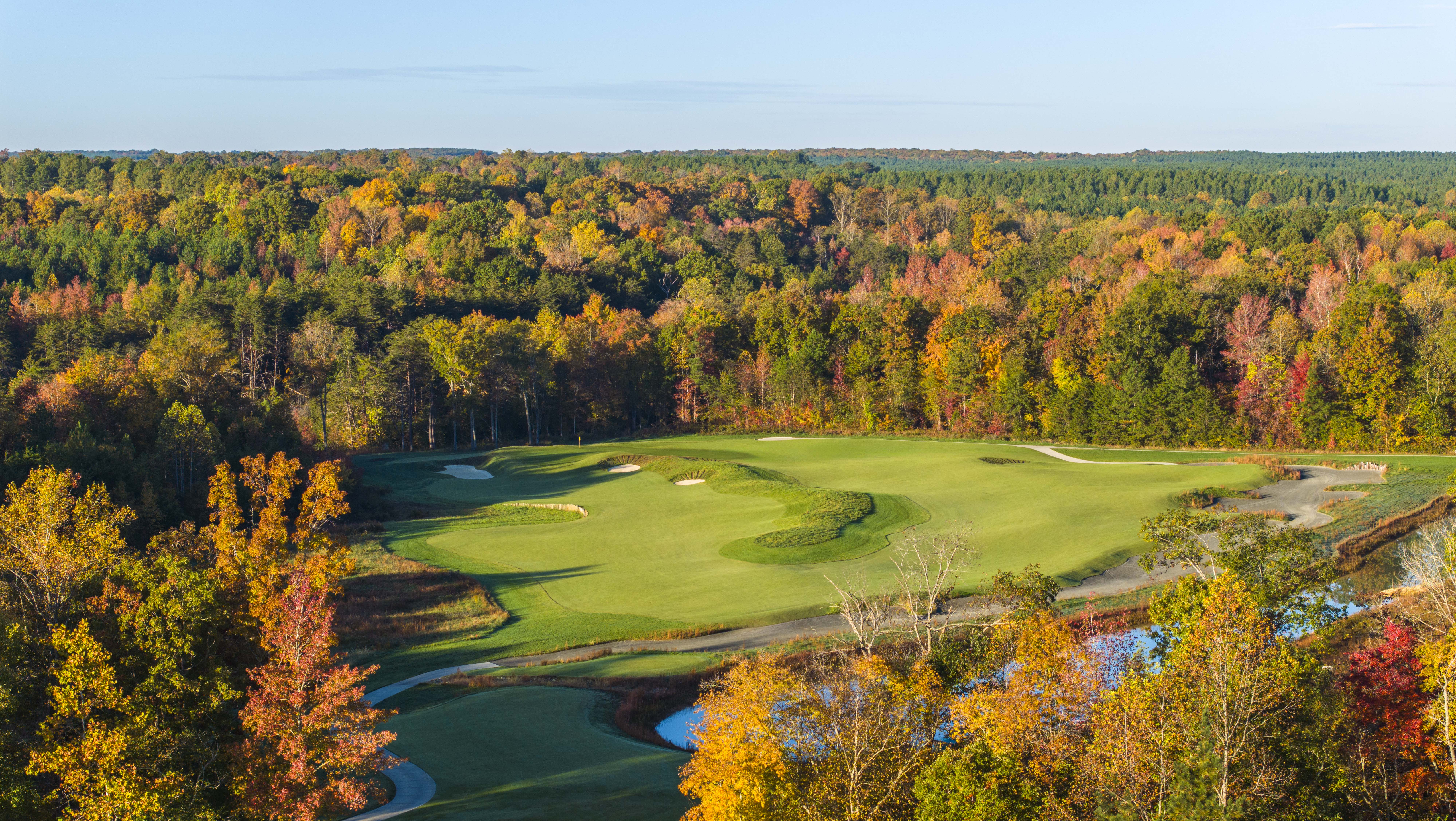
Hole No. 5
This alternate fairway short par-4 is a salute to the late, great architect Pete Dye with a long, winding waste bunker that doubles as a cart path, a wooden-post bulkhead edging the wetlands hazard on the left, pot bunkers lined with railroad ties and a two-pronged green. The flag location will likely dictate which avenue will be taken on any given day. After you putt out, enjoy a pleasant glimpse of Contrary Creek just beyond the green.
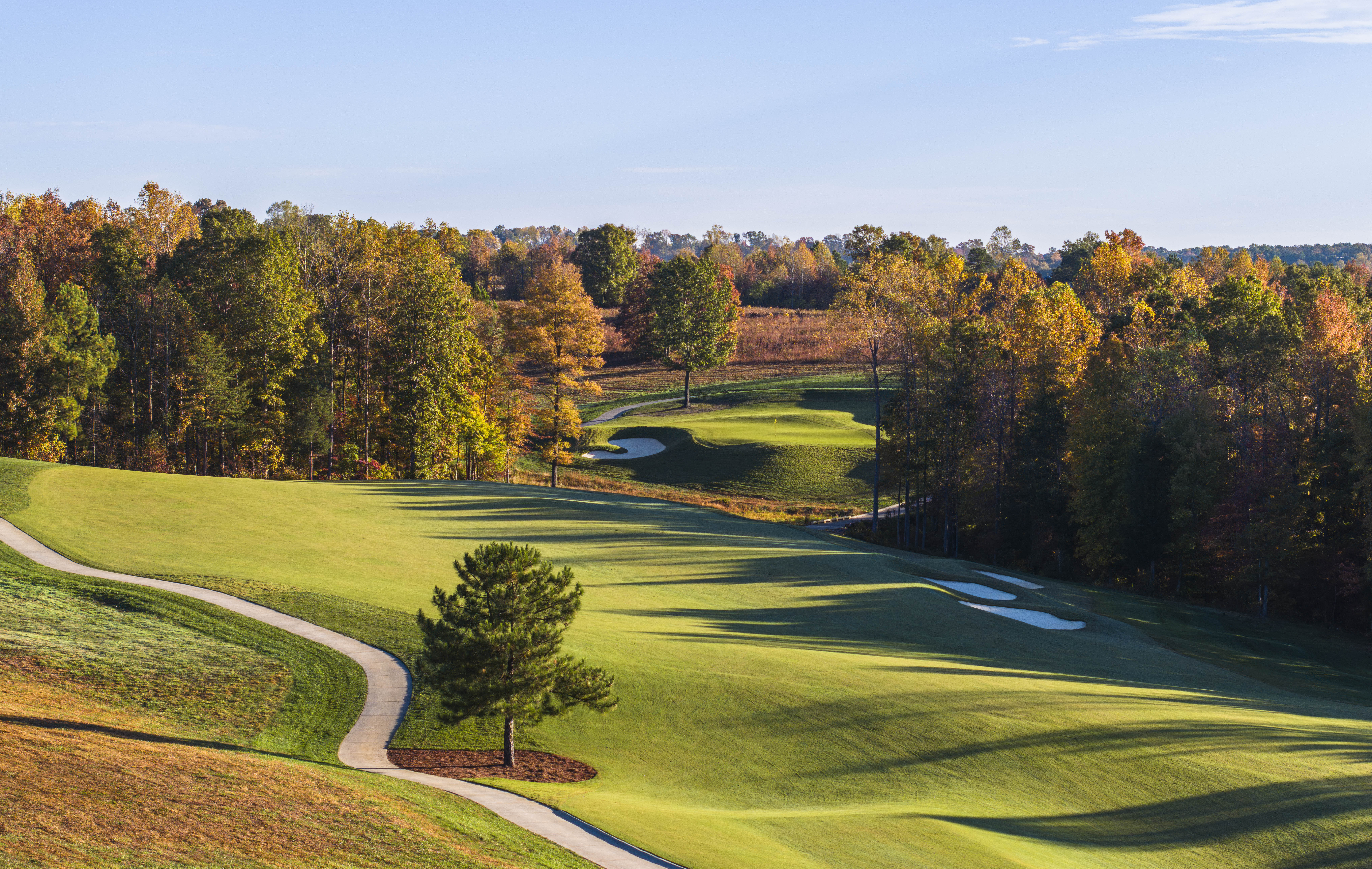
Hole No. 6
The magnificent sixth hole features a rumpled blanket of turf that dips and rolls and rises uphill to a high point that’s the ideal landing area off the tee. From the top of the hill, the second shot is tough for average golfers—a forced carry over a deep stream ravine to a distant and deceptive green, based on those found at Donald Ross’s masterpiece Pinehurst No. 2. The original concept was to call this hole a par 4-and-a-half; anyone using nine strokes in playing the hole twice would be playing the sixth in par figures. On the official scorecard, though, the sixth is listed as a regular par 4.
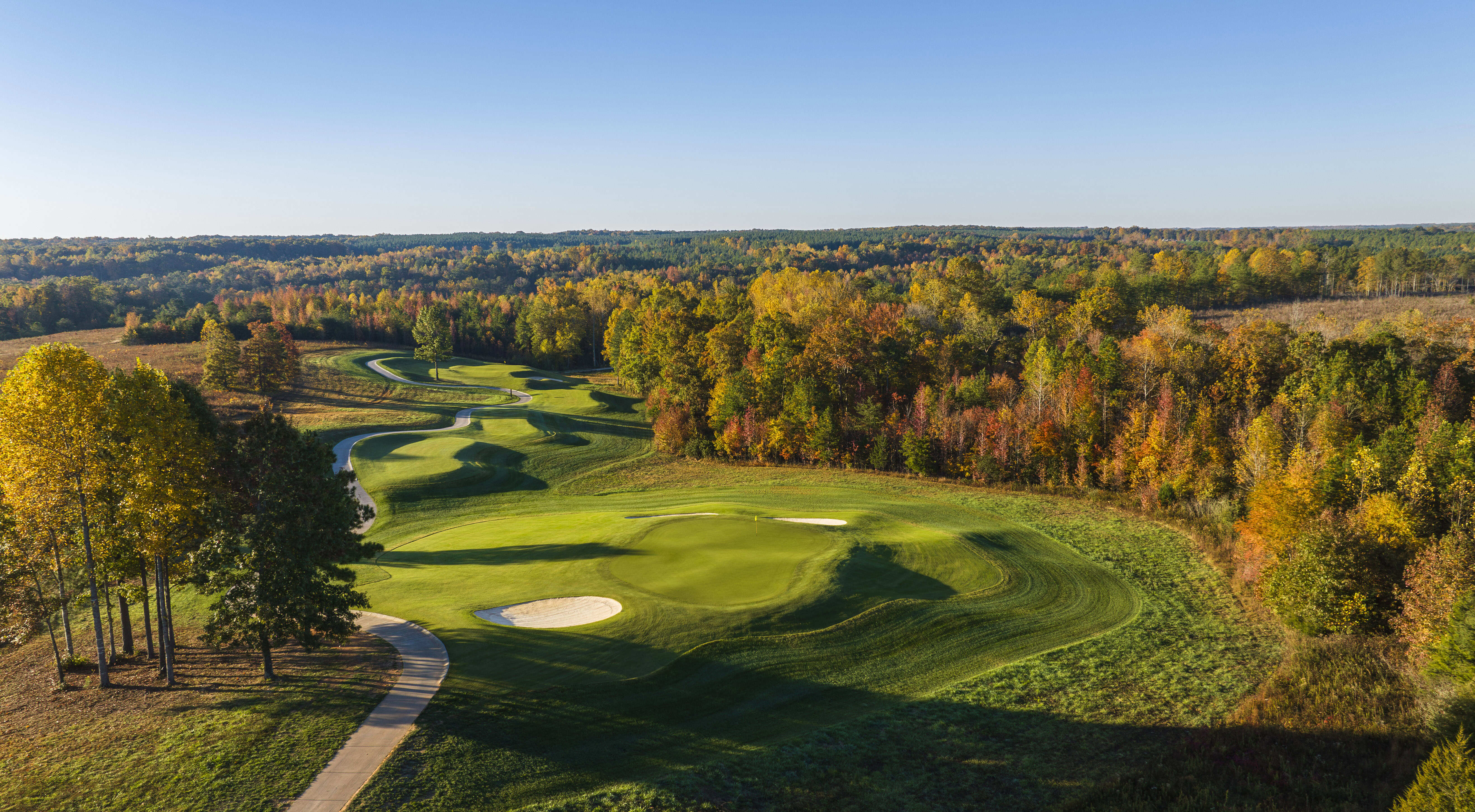
Hole No. 7
The uphill nature of the par-3 seventh originally brought to mind a H.S. Colt hole at Wentworth (West) in England, a pedestal surrounded by bunkers, but as construction commenced, it morphed into a shelf green with a perilous left edge countered by plenty of bailout to the right. During preliminary shaping, Gonzo carved out a pair of bunkers directly below the front edge of the green that uncannily resembled the famed Principal’s Nose at St. Andrews. Thus, the seventh is now Cutalong’s Principal’s Nose par 3.
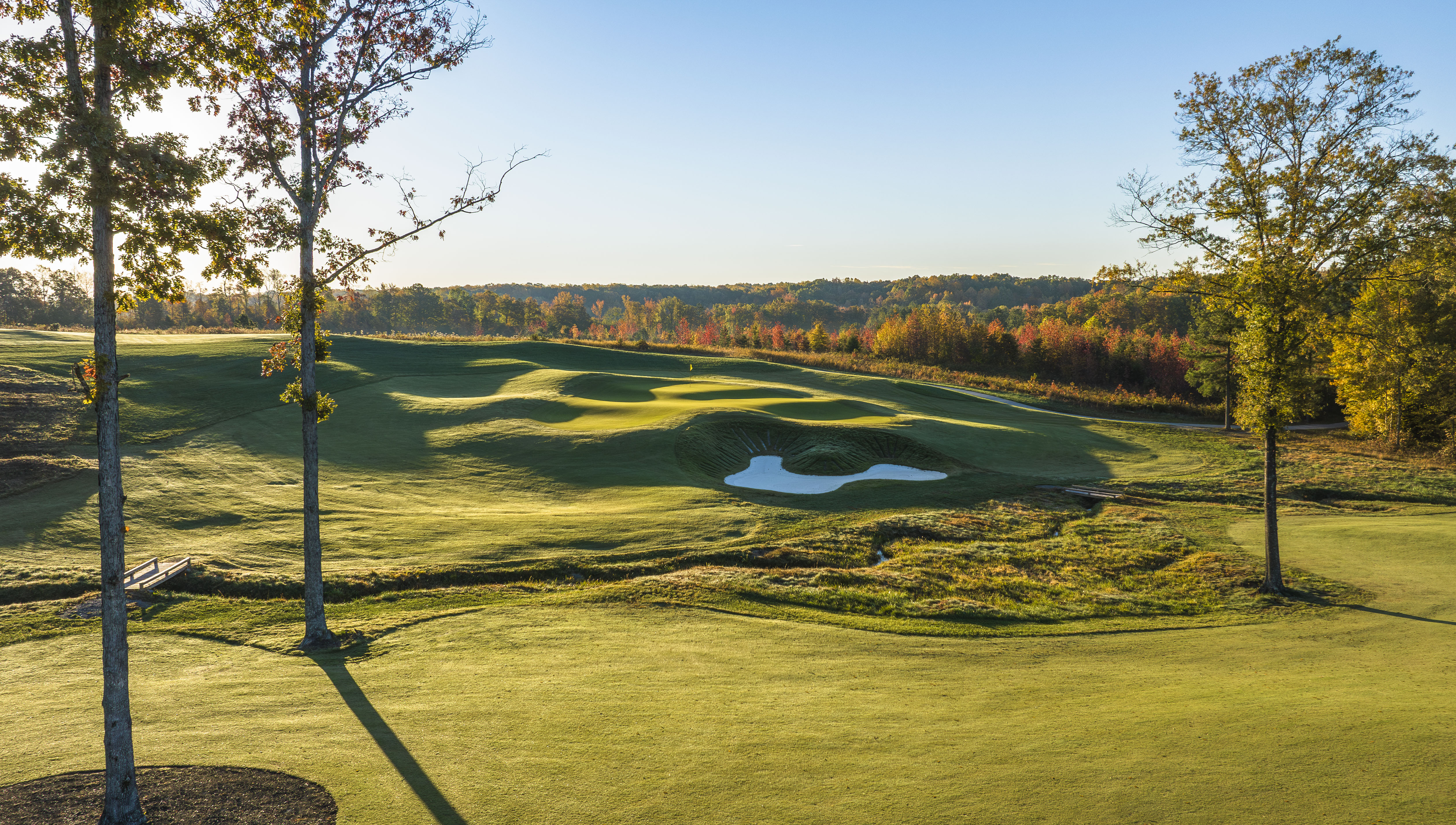
Hole No. 8
The eighth is a classic risk-reward par 5, best approached in reverse. Its unique V-shaped green—modeled after a true Redan—offers two narrow entries through the trees. The left slot suits those going for it in two; the right is ideal for a back-right pin. Precise tee placement is key to taking full advantage.

Hole No. 9
The uphill par-4 ninth has no bunkers—just natural rock outcroppings that add visual drama but offer free drops. The fairway rolls uphill from tee to green, constantly kicking from right to left, and the green at the end of the rise is a mirror image of Alister Mackenzie’s 14th green at Augusta National with its distinctive plateaus and ridges that sometimes pose putts that can break ninety degrees.
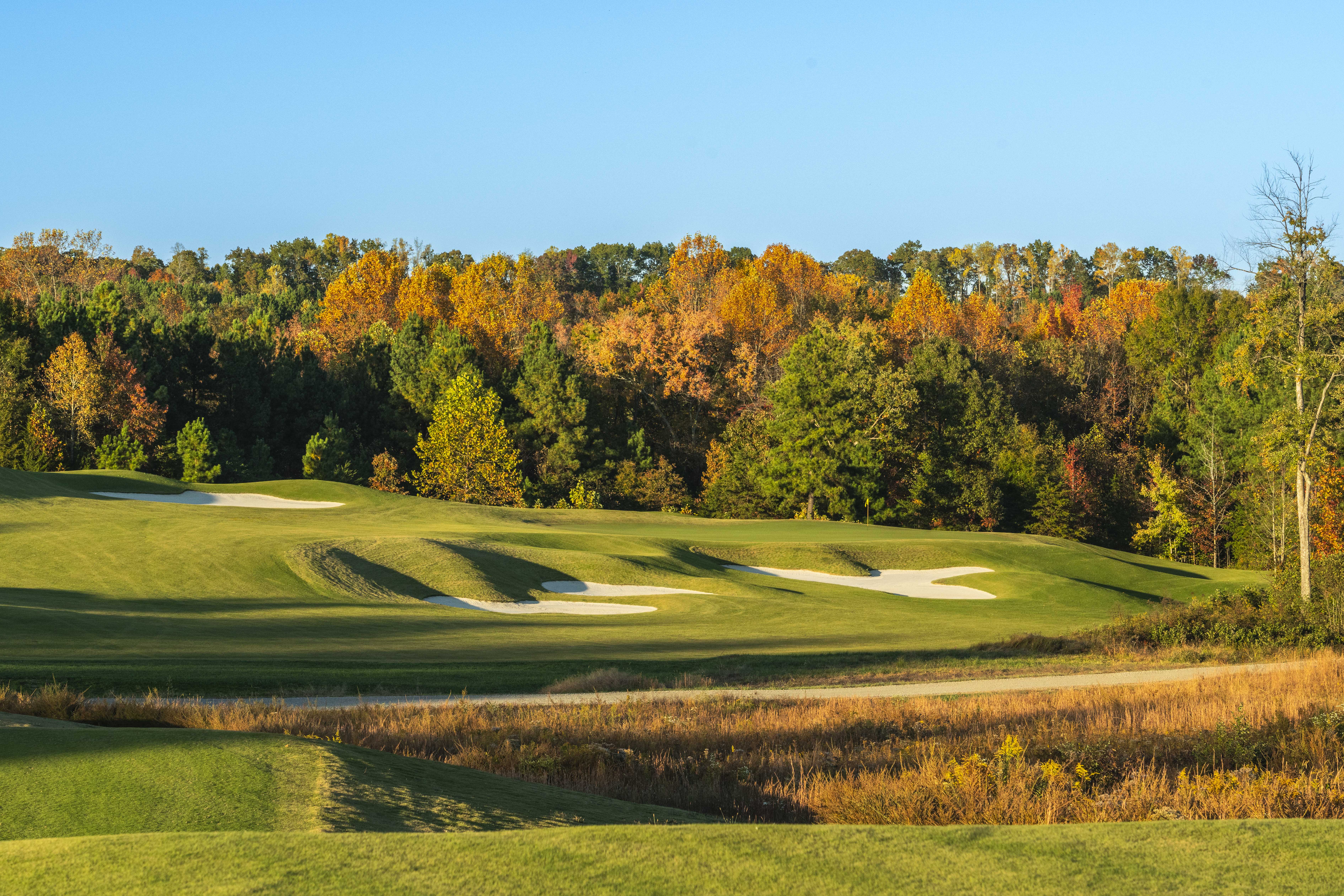
Hole No. 10
The par-4 10th is a full-hole Redan, with both fairway and green sloping front-left to back-right. Reachable from the tee, but tough to hold—smart players aim left and let the contours do the work.
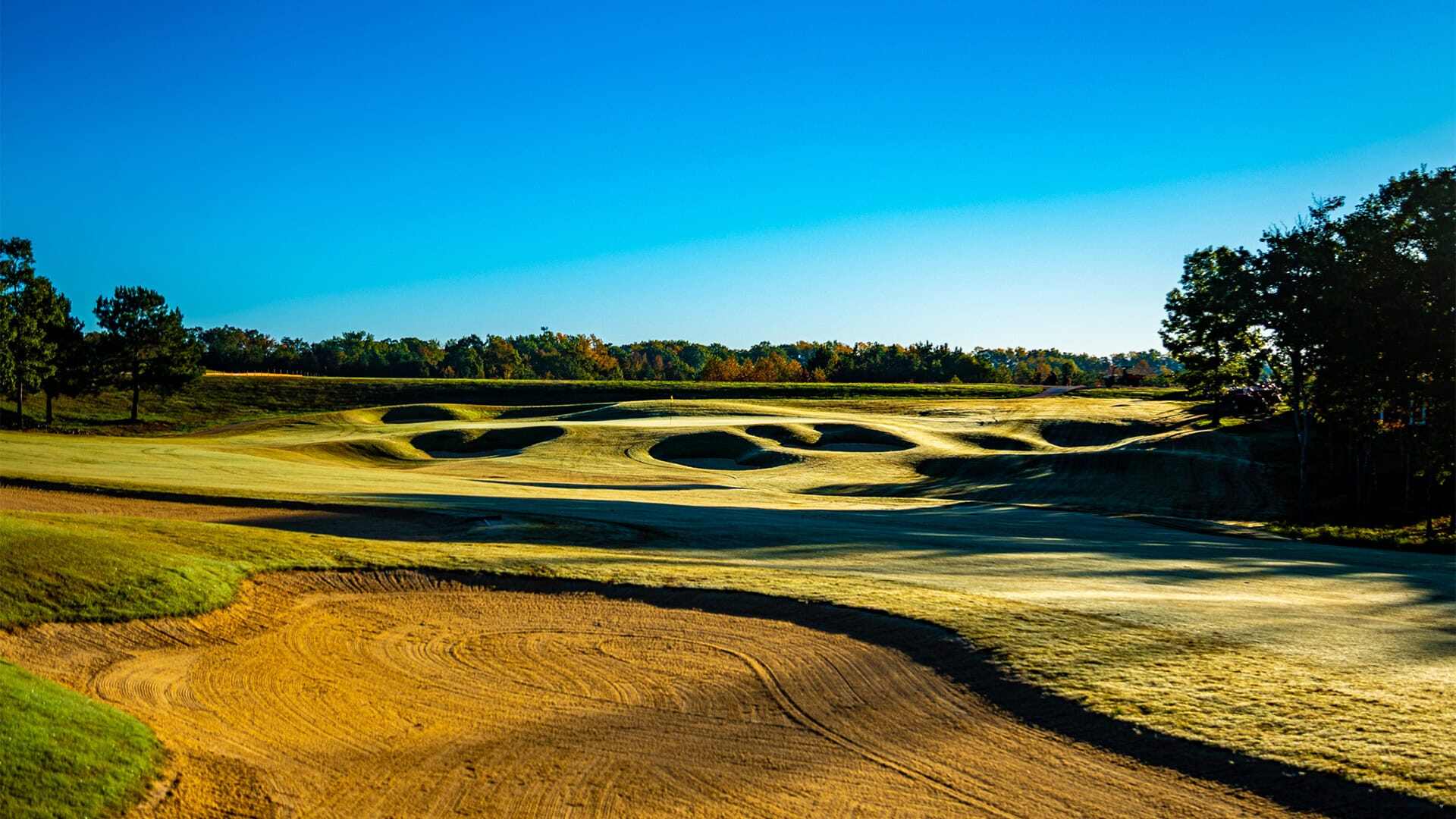
Hole No. 11
The par-5 11th is shaped like a fishhook, and for most it will play as a true three-shot hole. A diagonal stream bisecting the fairway beyond the crest will force bigger hitters to throttle back. Even with a good, long, well-placed drive, tall trees up the right side will require a controlled fade to reach the putting surface in two. The uphill green—reminiscent of classic English design—adds a final challenge.

Hole No. 12
Twelve is designed as a Biarritz, a C.B. MacDonald invention featuring a long rectangular green bisected by a wide, deep depression that creates front and back plateaus. This one differs from most because it’s uniquely angled to the line of play. It demands precision—especially from the back tee, where the approach is into the shallow front, guarded by deep bunkers. From forward tees, players can more easily roll shots through the trench to a back pin.
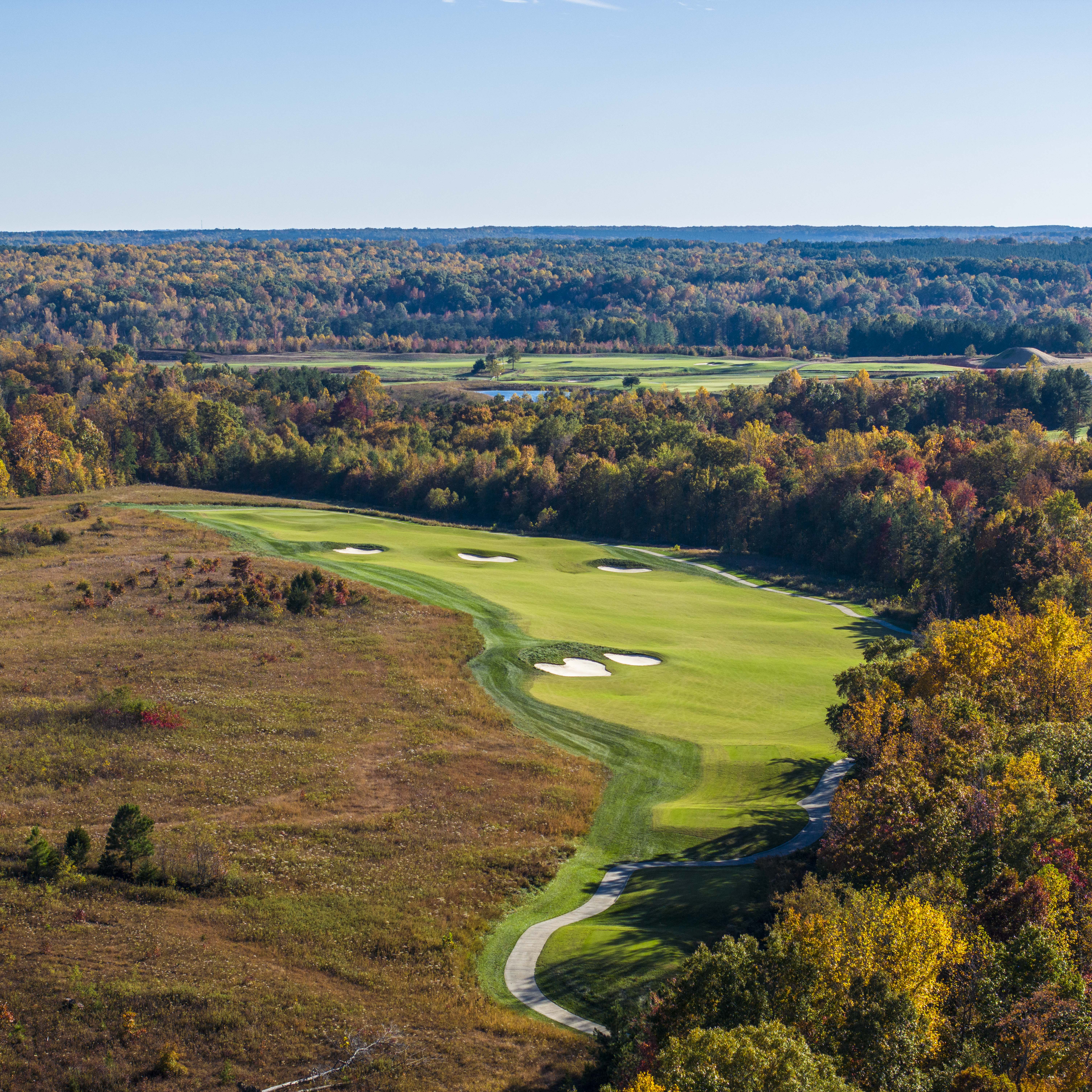
Hole No. 13
The fairway on 13 slopes left to right, with bunkers up the high side marking the ideal line off the tee. Approaches must carry a slope graced by a necklace of three bunkers to reach a subtle, plateau green. There are no bunkers around the green, but a sharp drop-off on the right and a central spine make putting a true test.
.jpg)
Hole No. 14
The par-5 14th is Cutalong’s most unique hole, featuring elements inspired by Talking Stick North, Prairie Dunes, and St. Andrews Road Hole. From the back tees, the play is up the left, over cross bunkers to a hidden fairway—miss left, and you’ll find a 10-foot-deep railroad cut turned into a rugged strip bunker. The green, a mirror of St. Andrews' 17th, is guarded by a pot bunker and a narrowing approach. From forward tees, players must use the right fairway; the better your angle left on the second shot, the better your chance at the green—if you can avoid the old mineshaft in the rough.
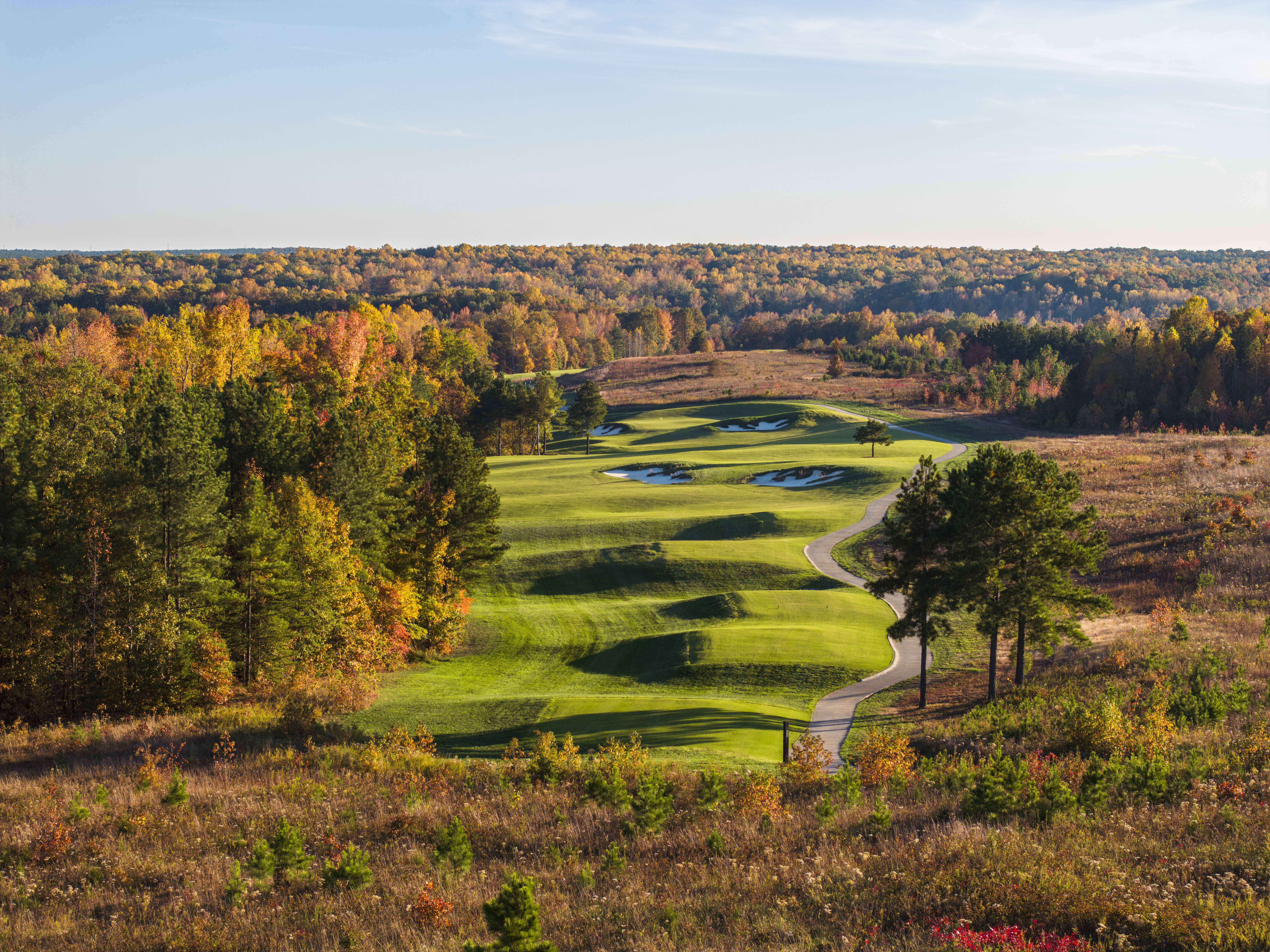
Hole No. 15
The short par-4 15th offers two distinct paths to the green. A safe drive up the left leaves a clear approach but brings a deep front-left bunker into play. Aggressive drives over MacKenzie-inspired bunkers on the right set up a short, half-blind pitch over a knob. The green sits in a punchbowl—like the 16th at National Golf Links—with a tight-mown slope on the right that feeds shots toward the pin.
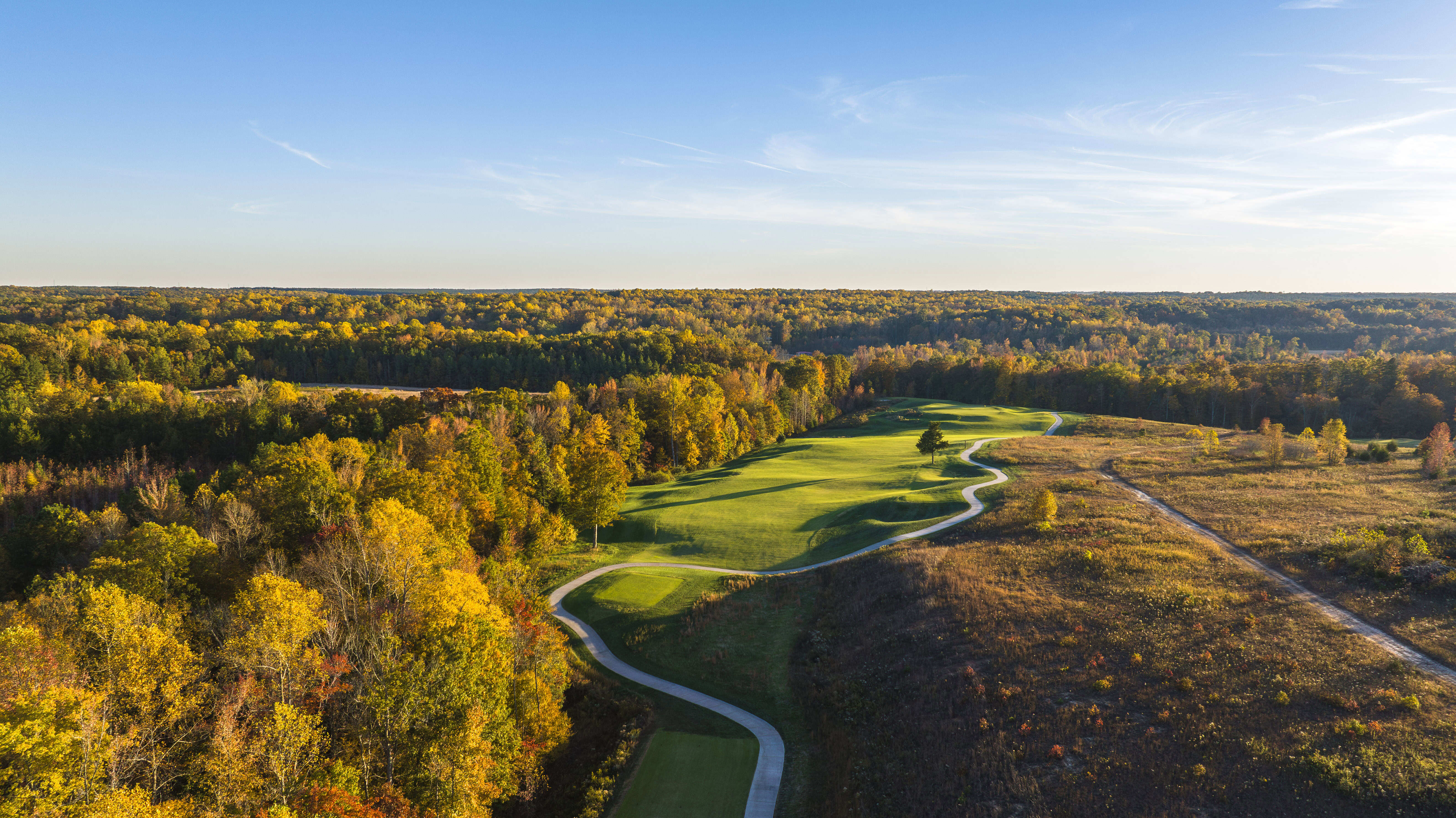
Hole No. 16
The bunkerless par-4 16th features a blind tee shot from the back tees over a sideslope into a generous fairway. The elevated green sits beyond a natural draw and requires a full carry to reach. A steep slope beyond the green makes long approaches tough to recover.
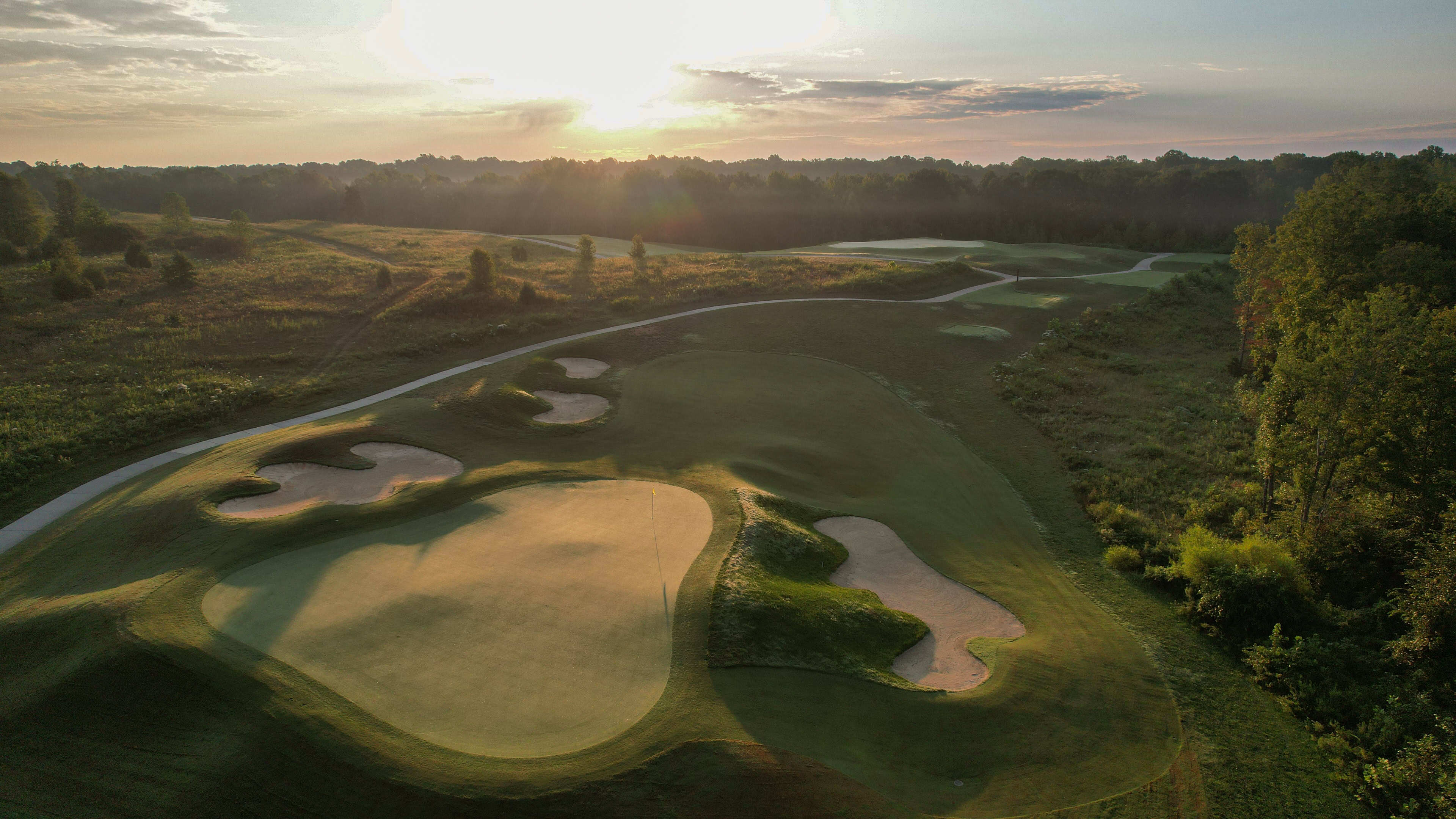
Hole No. 17
Inspired by MacKenzie’s famed Gibraltar hole at Moortown, Cutalong’s par-3 17th mirrors the original’s unusual bunker placement—high right and low left—designed to subtly influence every swing. True to scale, it stays faithful to the classic, minus the rear bunkers. This Gibraltar has enough trouble without them.
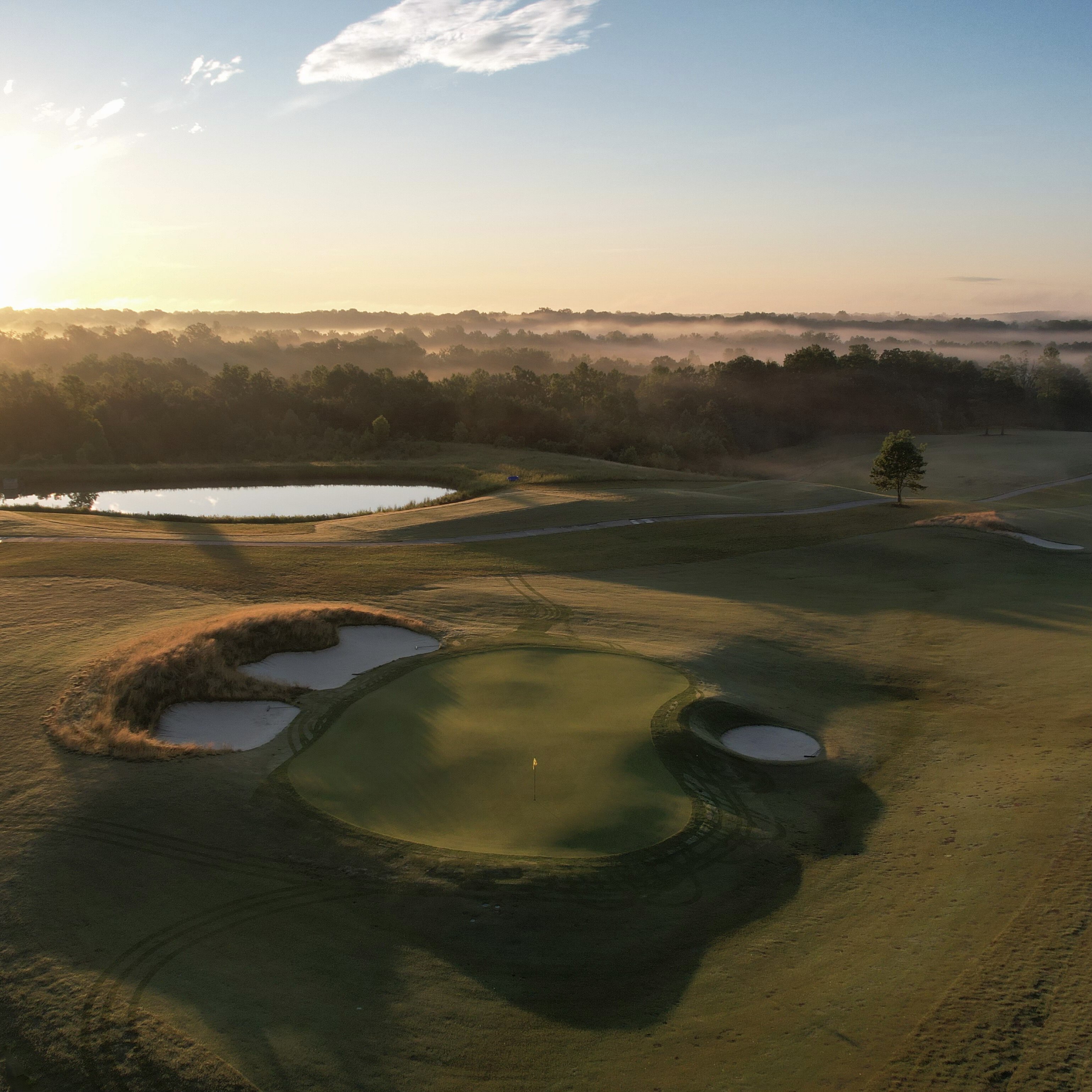
Hole No. 18
Inspired by the 18th at Shinnecock Hills, Cutalong’s final hole is its most heavily bunkered, with a dozen traps including a central target bunker and five along the left. The diagonal green is small and demanding—fitting for a closing par-4 that rewards precision from tee to pin. Cutalong’s 18th is a superb conclusion to a collection of unique and challenging golf holes.